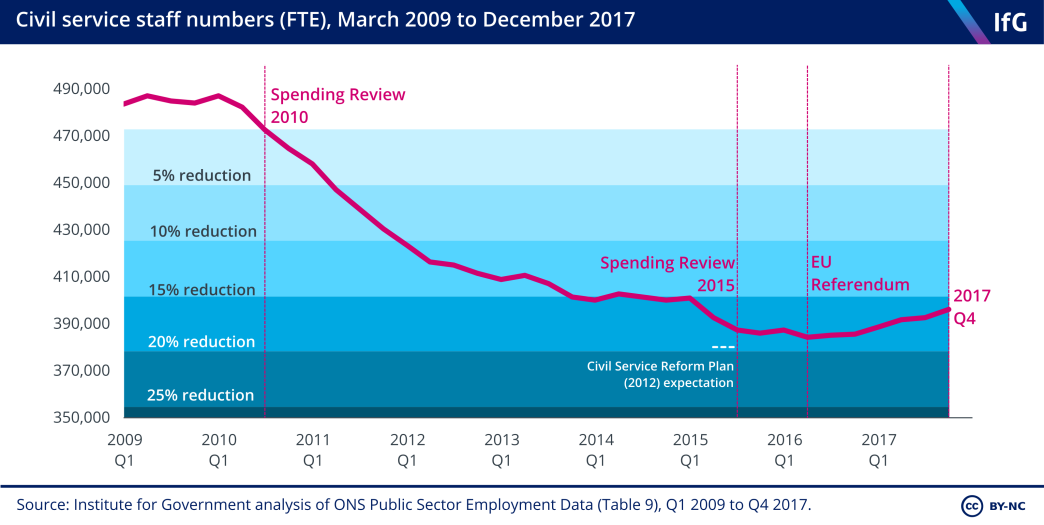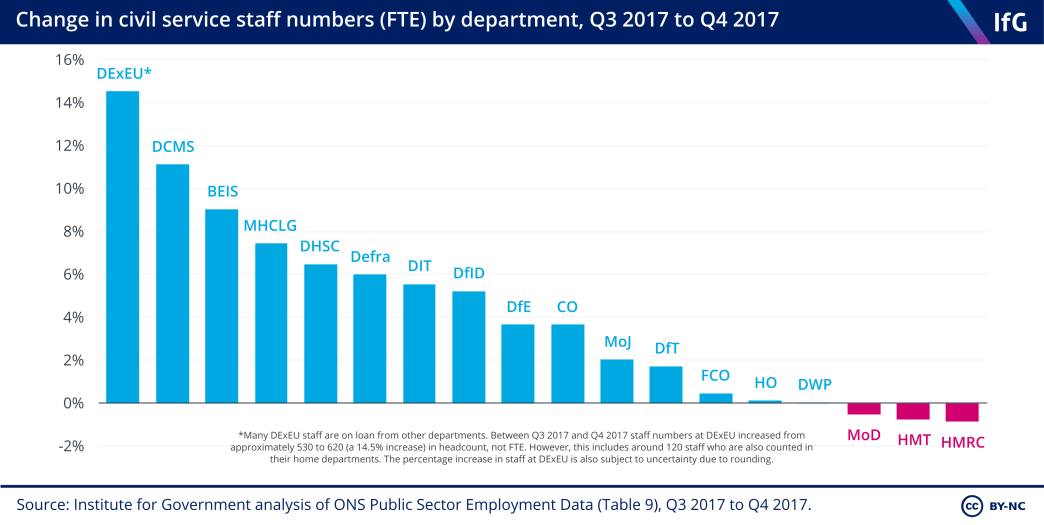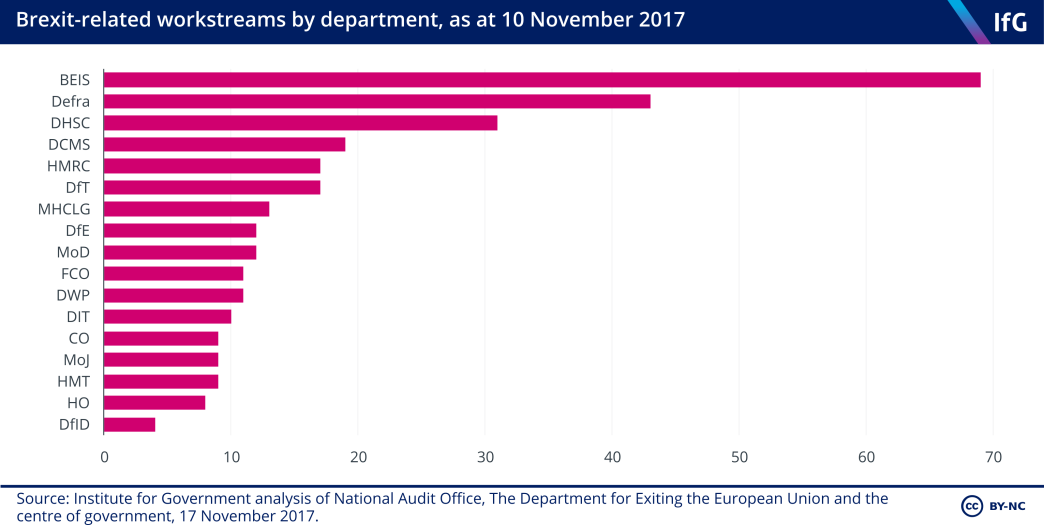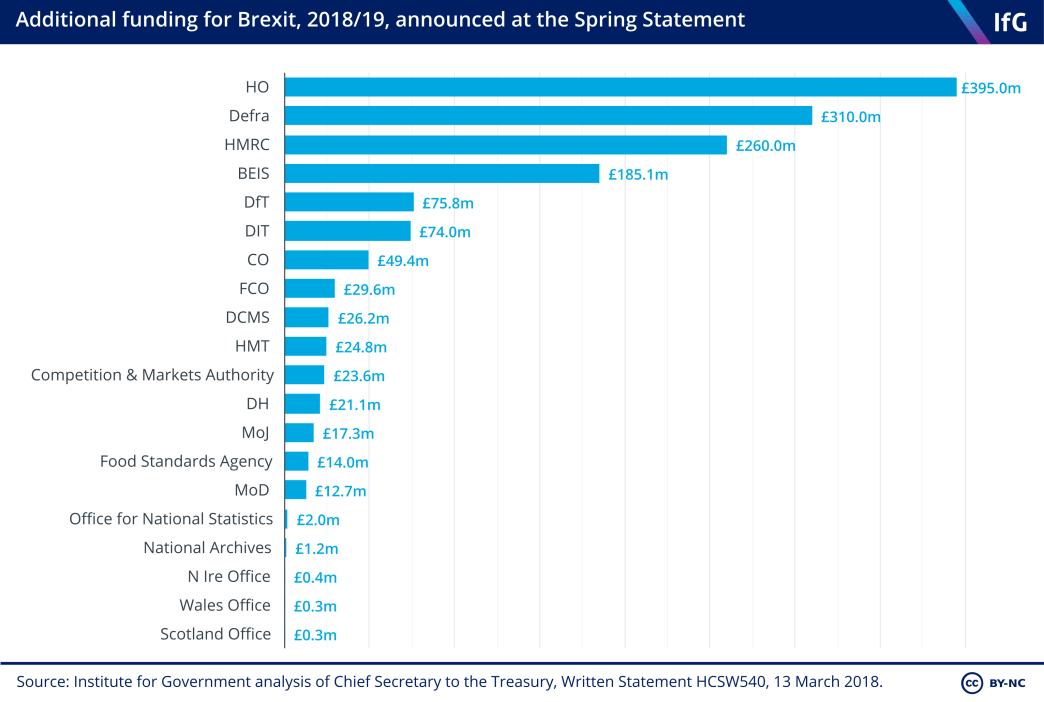Brexit is continuing to ramp up the civil service workforce
The demands of Brexit have turned several government departments – like Defra and DExEU – into recruitment hotspots.
The demands of Brexit have turned several government departments – like Defra and DExEU – into recruitment hotspots. And there will be more to come, says Aron Cheung, as departments like the Home Office and HMRC prepare to operate in a new landscape.
One in every eight of the job cuts levied on the civil service after 2010 has been reversed since the EU referendum

Since the EU referendum in 2016, the civil service has grown by 3%, with a total of 11,500 new jobs created. That figure marks an end to the deep cuts that followed the 2010 Spending Review, during which the civil service shrank by 19%.
But while the referendum marks a turning point, Brexit is not the only reason for growth in the civil service workforce. The pace of cuts was already slowing by late 2015, and many of the new jobs are not related to Brexit: HM Prisons and Probation Service, for example, is currently recruiting up to 2,500 new prison officers. In senior civil service grades, staff numbers have been rising since 2012, and some of the increase in civil service numbers reflects staff being transferred from public sector bodies (which technically are not part of the civil service). For example, in the most recent quarter some 900 staff members moved from the Environment Agency to Defra.
Even so, Brexit is a major factor in the recent growth in civil service numbers. The Institute for Government has estimated that by March 2019 preparing for Brexit will have cost Whitehall £2 billion – a significant part of which will be from staff costs. In some departments, such as Defra, Brexit-related staff increases will almost certainly fully reverse the cuts since 2010. In some departments, such as Defra, Brexit-related staff increases will almost certainly fully reverse the cuts made since 2010.
Staff numbers are growing rapidly in Brexit-facing departments that focus on policy

Many of the Brexit-related staff increases have been at departments that focus primarily on policy, rather than operational delivery. The reason is that so far the Brexit process has largely been about formulating policies rather than implementing them.
In the final three months of 2017, staff numbers increased by 14.5% at DExEU, bringing its total workforce up to 620.
Staff numbers also rose by:
- 9% at BEIS, which according to the National Audit Office (NAO) has 69 Brexit-related workstreams – more than any other department.
- 6% at Defra, which has 43 Brexit workstreams.
- 11% at DCMS, which has 19 Brexit workstreams.

As the Brexit process continues, we should expect further Brexit-related recruitment, especially for operational roles
Yet in some Brexit-facing departments, staff numbers did not increase significantly in the most recent quarter. Notably, this was the case at the Home Office – which is responsible for immigration – and HM Revenue and Customs (HMRC), responsible for customs. This does not necessarily mean that they have not hired additional staff to deal with the demands of Brexit – both are very big departments and it is possible that Brexit-related recruitment has been obscured by staff cuts elsewhere.
The reality is that these departments will continue to add to their staff as Brexit moves towards implementation. The Home Office needs to hire 1,500 Brexit staff by September 2018, and HMRC will need between 3,000 and 5,000 additional staff by March 2019 (some of this recruitment has already started).

The central role of these departments in delivering Brexit is also reflected in the additional funding announced by the Chancellor in the Spring Statement last week. The Home Office received an additional £395 million (m) for 2018/19, and HMRC ‘s budget increased by £260m. This again indicates that in preparing for Brexit, some of Whitehall’s important operational departments will have to invest in a bigger workforce over the coming year. After years of staff cuts, 2018 looks set to be a big year for civil service recruitment.
- Supporting document
- cost-of-brexit-what-whitehall-spending-insight-final-vb.pdf (PDF, 439.86 KB)
- Topic
- Brexit Civil service
- Keywords
- Civil servants
- Department
- Department for Exiting the European Union Department for Environment, Food and Rural Affairs Department for Digital, Culture, Media and Sport
- Publisher
- Institute for Government